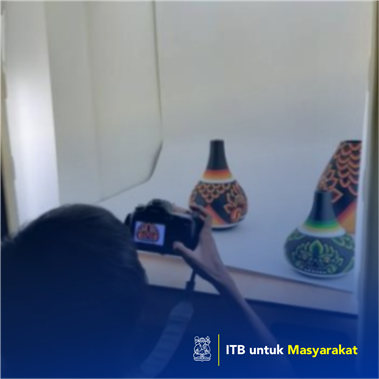

Meirina Triharini
Artifacts are anything made and/or used by humans, including tools, containers, manufacturing debris, and food remains (B. A. Kipfer in Dictionary of Artifacts, 2007). Artifacts are an important element in showing the cultural characteristics of society in the field of design. In the field of design, the use of ethnographic methods is often used, especially in relation to collecting data and understanding a cultural and social problem in society. Culture is something dynamic, something where the researcher looks for patterns of daily life which consists of finding out the behavior of the subject, the language used and how the artefacts are made and used (Spradley, 1980 in Creswell, 1998; 59). Therefore, one of the roles of ethnographic researchers is to analyze artifacts. Through this method, designers or design students are required to go into the field, interact directly with local communities, and see holistically the conditions in the field, so that a problem can be analyzed in depth and accompanied by design ideas that produce effective solutions. Knowledge about artifacts is helpful to students in many areas, especially in the field and on visits to museums. Artifacts are the tangible remains of our ancestors and awareness of them and their importance is beneficial to a student’s well- rounded education (B. A. Kipfer in Dictionary of Artifacts 2007). The development of a digital database system has a function to archive various artifacts so that it can be accessed by academics, especially those with a design background who use ethnographic methods in the process.
Penerapa Karya Seni/Desain/Arsitektur/Perencanaan Wilayah, Penerapan Karya Tulis
The digitization of artifacts in Indonesia is still not much done. Documentation of artifacts is still limited to physical objects, for example in the museum (A.A. Puspita et al, 2019). Almost all of cultural heritages in Kasunanan Surakarta are still in the form of physical objects (tangible or intangible) that are easily broken and forgotten; moreover, they are inaccessible and difficult to be inventoried and managed (A.R. Tanamaah & M. B. Wenas in A.A. Puspita et al, 2019). The development of a digital artifact database system is intended so that data can be collected without requiring special space. The documentation and data will be collected in one large database and can be easily accessed by the public. This data source will become an important medium in the future to continue studying ethnography for design students and the wider community to get to know various cultural artifacts. In the process of making a digital database, operational standards are needed. Operational Standards can be defined as a document that describes daily operational activities, with the aim that the work is carried out correctly, precisely, and consistently, to produce products according to predetermined standards (Tathagati, 2014). Following standards, data, bundled with the photographs documentation, the newly generated representations form become the base of knowledge of the museum’s long-term digital preservation environment.